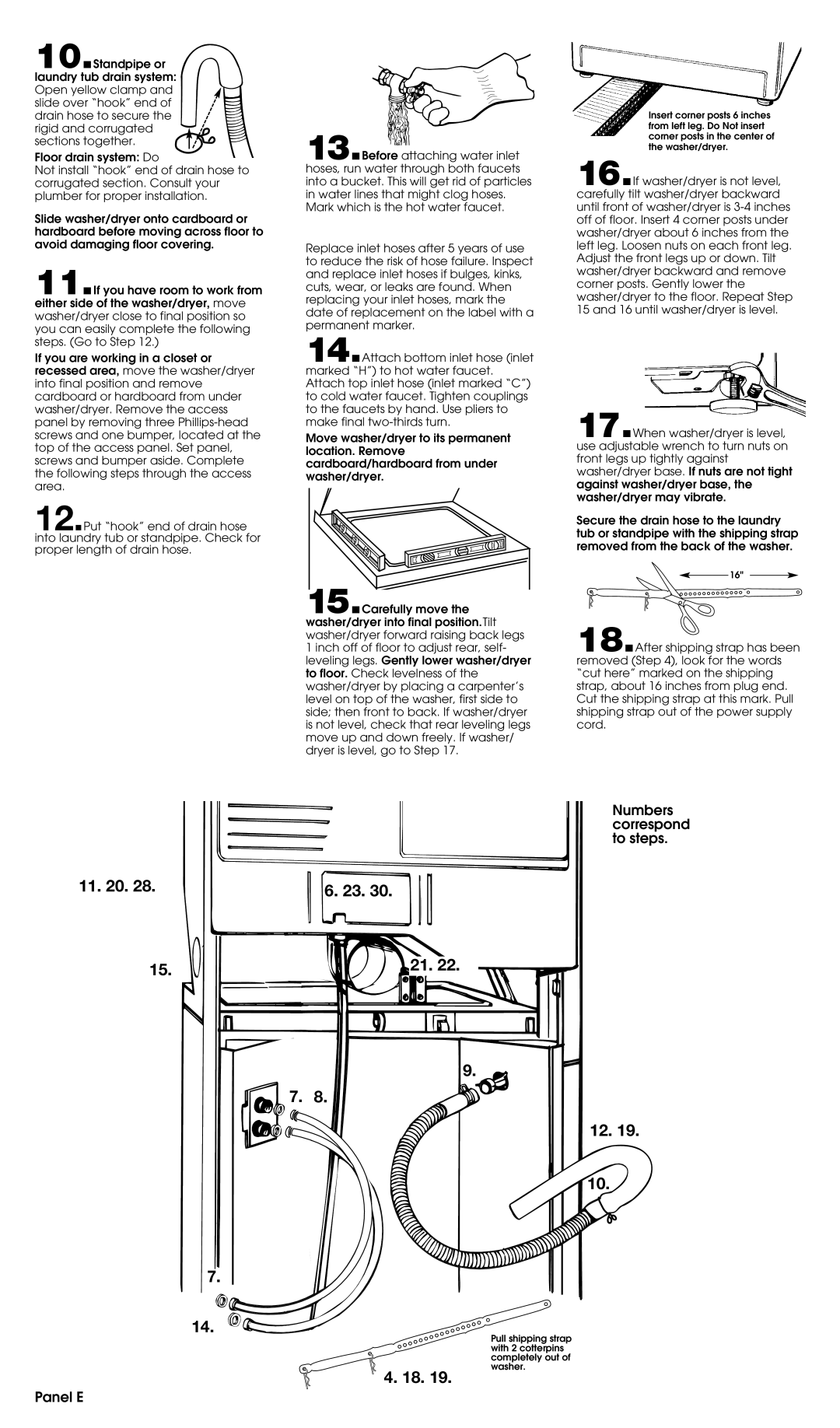
10.Standpipe or ![]() laundry tub drain system:
laundry tub drain system:
Open yellow clamp and slide over “hook” end of drain hose to secure the rigid and corrugated sections together.
Floor drain system: Do
Not install “hook” end of drain hose to corrugated section. Consult your plumber for proper installation.
Slide washer/dryer onto cardboard or hardboard before moving across floor to avoid damaging floor covering.
11.If you have room to work from either side of the washer/dryer, move washer/dryer close to final position so you can easily complete the following steps. (Go to Step 12.)
If you are working in a closet or recessed area, move the washer/dryer into final position and remove cardboard or hardboard from under washer/dryer. Remove the access panel by removing three
12.Put “hook” end of drain hose into laundry tub or standpipe. Check for proper length of drain hose.
13.Before attaching water inlet hoses, run water through both faucets into a bucket. This will get rid of particles in water lines that might clog hoses. Mark which is the hot water faucet.
Replace inlet hoses after 5 years of use to reduce the risk of hose failure. Inspect and replace inlet hoses if bulges, kinks, cuts, wear, or leaks are found. When replacing your inlet hoses, mark the date of replacement on the label with a permanent marker.
14.Attach bottom inlet hose (inlet marked “H”) to hot water faucet. Attach top inlet hose (inlet marked “C”) to cold water faucet. Tighten couplings to the faucets by hand. Use pliers to make final
Move washer/dryer to its permanent location. Remove cardboard/hardboard from under washer/dryer.
15.Carefully move the washer/dryer into final position.Tilt washer/dryer forward raising back legs 1 inch off of floor to adjust rear, self- leveling legs. Gently lower washer/dryer to floor. Check levelness of the washer/dryer by placing a carpenter’s level on top of the washer, first side to side; then front to back. If washer/dryer is not level, check that rear leveling legs move up and down freely. If washer/ dryer is level, go to Step 17.
Insert corner posts 6 inches from left leg. Do Not insert corner posts in the center of the washer/dryer.
16.If washer/dryer is not level, carefully tilt washer/dryer backward until front of washer/dryer is
17.When washer/dryer is level, use adjustable wrench to turn nuts on front legs up tightly against washer/dryer base. If nuts are not tight against washer/dryer base, the washer/dryer may vibrate.
Secure the drain hose to the laundry tub or standpipe with the shipping strap removed from the back of the washer.
16"
18.After shipping strap has been removed (Step 4), look for the words “cut here” marked on the shipping strap, about 16 inches from plug end. Cut the shipping strap at this mark. Pull shipping strap out of the power supply cord.
Numbers correspond to steps.
11.20. 28.
15.
7.
14.
6. 23. 30.
21. 22.
9.
7. 8.
12. 19.
10.
Pull shipping strap with 2 cotterpins completely out of washer.
4. 18. 19.
